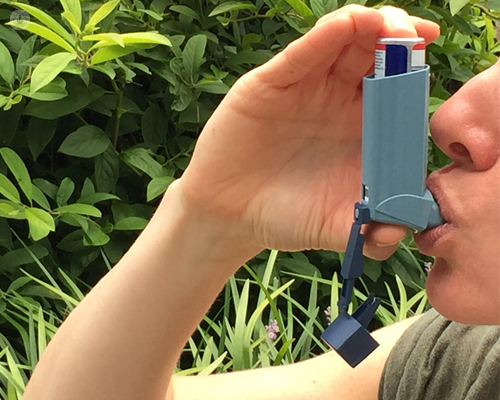Asthma and allergy relationship: the importance of treating an early stage
Written by:Asthma is a set of diseases that are manifested by obstruction of the airway or a feeling of breathlessness and may improve partially or completely when administered bronchodilators. It is also accompanied by inflammation in the wall of bronchi and produces narrowing the passage of air, which is manifested by wheezing or whistling. Most mucus production by cells of the bronchus in asthma patients is sometimes associated with cough and expectoration.

In asthma bronchial hyperreactivity exists where the airway to stimuli contracts and produces bronchospasm (bronchial obstruction with shortness of important air). These stimuli can be allergens (allergic substances), infections, chemicals, cold air, etc.
Asthma in children can manifest itself only by coughing or coughing with exercise.
Asthma, congenital or acquired pathology?
Asthma has a significant hereditary component, and sometimes, asthma may appear "de novo". Genetic predisposition interacts with external factors such as infections, pollution, allergies, smoking, and may favor the development of asthma.
A state of anxiety, distress or extreme fear can induce an asthma attack, but in people who already have the disease.
Moreover, obesity is a factor that aggravates asthma, like respiratory infections.
There are no measures to prevent the onset of asthma, although we can reduce the crisis by reducing the triggers that trigger.
5% of asthma patients are sensitized to a substance in the workplace. It is what is known as occupational asthma or work. The substances that most often cause this awareness are cereals and enzymes in baker latex in health care workers, bleaches (persulfates) and dyes in salons or isocyanates and acrylates in many industrial processes.
Relationship between asthma and allergy
In the first four years of life the most common asthma triggers are respiratory infections. In these cases, half of children will disappear asthma.
From five years until the end of adolescence the most frequent cause of asthma is allergy (80% of these patients).
In half of the adult asthmatic patients allergy plays an important role in triggering asthma. In the rest of these patients, asthma is due to an alteration of the immune system and inflammation developed is indistinguishable from that produced by the allergic asthma.
Allergens that most frequently cause asthma are dust mites, fungi, pollens when found at high concentrations, some animal dander, like a horse, cat, etc.
Diagnosing Asthma
Clinical symptoms of asthma are important but can be confused with other similar diseases. You have to perform skin allergy tests to rule out allergic asthma.
Although the diagnosis of asthma is needed spirometry and a bronchodilator test (a bronchodilator such as salbutamol or the like is managed and must observe significant improvement in the ability to expel air) to be positive.
In case of a negative response to bronchodilator test and we have a strong suspicion of asthma, you can perform a test of bronchial hyperreactivity by bronchial challenge with substances that cause bronchoconstriction in asthmatics (reduced ability to expel air from the lungs) as they are methacholine, adenosine or mannitol. If the patient has positive to one of these substances bronchoconstriction can indicate that you have bronchial hyperreactivity and, relying on other clinical signs, confirm the diagnosis of asthma.
Treatment options for asthma
Asthma, being a chronic disease, the specialist in Allergology must first inform the patient of their disease, what the symptoms are, what signs indicate that the disease worsens, to administer the treatments and doses needed for each clinical moment are and assess when to go to the emergency.
Asthma treatment should begin by inhaled drugs that target directly to the affected organ, lung, and have few side effects.
We have inhaled corticosteroids, which reduce inflammation and mucus production by the bronchi and long - acting bronchodilators, which open the airway to breathe better and last between 12 and 24 hours, for acute crisis shortness of breath, short - acting bronchodilators, which have an immediate effect on the diltación airway are used. It also has other drugs in case of not finding an appropriate response, such as anti - leukotrienes, theophylline, anticholinergics , and oral corticosteroids.
In patients difficult to control and poor quality of life and multiple income or need emergency hospital admissions, you should test the administration of special drugs for hospital use as omalizumab or mepolizumab.
And above all, if the patient is sensitized to an allergen and is observed to be a trigger of asthma should start treatment with immunotherapy against the substance responsible for the rhinitis or asthma.
If allergies or rhinitis untreated, ¿end in asthma?
There is a relationship between rhinitis and asthma because the airway is unique for both and an inflammatory process can affect the nose and lungs. 70-90% of patients with asthma are associated with rhinitis.
Patients with sensitization to dust mites, mold or animal dander, if exposed to any of these allergens and are not administered immunotherapy are very likely to develop asthma. Therefore, a good prevention environmental control measures as possible and the administration of treatment with vaccines against specific allergens sensitized rhinitis patients has been found to prevent the development of asthma.


